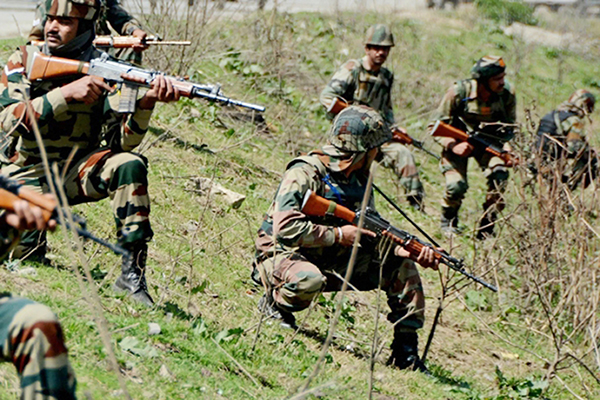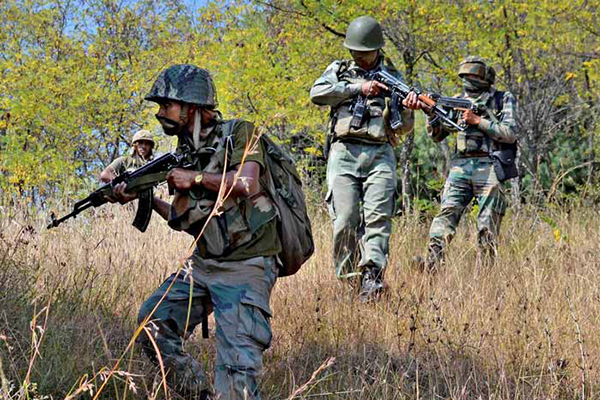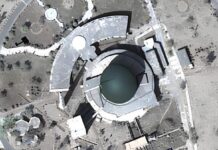The Agnipath Scheme has drawn wide-spread criticism particularly from the veterans community, clouding some of the good aspects and the well-thought out intentions that went into the formulation of the scheme.
The scheme has been accused of diluting the professionalism of the armed forces. They also feel that the process will result in mixed units, who will lack cohesion and hence regimentation, which will reduce their effectiveness. There is also the criticism that with the induction of women in all trades, a unit’s fighting efficiency and rigour will reduce.
The concept is new for the Indian armed forces, but similar schemes have been implemented in several other countries, without any adverse impacts.
The scheme has been evolved keeping in mind the phenomenal changes in society and technology, and to equip the organisation to be future ready. In a modern battle field everyone requires a younger workforce, tech-savvy or tech friendly armed force and a modern fighting soldier.
The future of warfare entails a lighter human footprint, but soldiers equipped with state-of-the-art weaponry, supported by cutting-edge technology to fight a war in a highly informationised environment. This recruitment reform would help in right sizing the armed forces provided it gets dovetailed into the imperatives of fifth generation warfare.
There is a desire among the youth, especially those in the border areas, to serve the country for a short duration, rather than settle for a service spanning about two decades.
In a Nutshell
Agniveers will go through 26 weeks of basic military training (the existing module is of 44 weeks), bear a distinct rank; and have on-the-job training in the unit. After the four-year engagement, they will go back to society. During the service, their uniform will have a distinct insignia. The armed forces should achieve a younger warrior profile without compromising on quality or capability. And, Agniveers should be looked after in terms of employment benefits and post-exit opportunities.
For the ranks below officers, the Agnipath Scheme is the equivalent of the short service scheme for officers The armed forces have a Short Service Commission (SSC) for officers for 10 to 14 years, which was necessitated as a cadre-management exercise. The SSC scheme has worked well and SSC officers have been fairly well employed in the civil world.
Agniveers will be selected from across the country. The selection process should improve homogeneity, national cohesion and integration.
Agniveers will be entitled to all medical facilities, leave, CSD facilities, honours and awards. They will have a fixed salary package, with annual increments. In addition, they will get the risk and hardship, dress, and travel allowances. Agniveers will be provided life insurance cover for their engagement period. They will also be entitled to compensation for disability. One-time ex-gratia will be paid in case of death on duty in addition to the insurance.
The tax-exempt ‘Seva Nidhi’ package and detailed skill-set certificate will be provided to Agniveers, for possible employment outside.
Significant Advantages
One significant advantage of this scheme would be the much lower age profile of the service. It will increase promotional avenues of the permanent cadre. The significant advantage for the young entrant will be early employment with significantly good emoluments and a 25 per cent chance of joining the permanent cadre. The Agniveers will acquire new skill sets, leadership and team-building capabilities.
It may not be possible to train or assign hi-tech jobs in this short period of engagement of Agniveers, but they will be used for many less technical jobs, including working on the aircraft and on ships. Those who become permanent employees will go through higher technical training. The armed forces have confirmed that their combat capability will not be affected by such enrolment.
Primarily, the scheme has been woven around the need for the national exchequer to save money, which can then be used for modernisation of the forces. India’s defence budget for 2022-23 is Rs 5.25 lakh crore, of which Rs 1.2 lakh crore is for pension component. As per reports, the “prospective life-term saving” in the cost of engagement of a jawan who leaves after 17 years of service with pension and other benefits, as compared to an Agniveer, will be Rs 11.5 crore. National defence budget management is essential. There has to be a much more significant percentage for Capital acquisitions. No major country has such adverse capital to revenue expenditure and pension bill ratios. It is hoped that the money saved would be used to focus more on the advancement of technology and military modernisation.
Countering Criticism
It is unfair to say that Agniveers will not have the desired status in the forces. They will be a key member of the team. Similarly, it will also give an opportunity for the youth to choose if they want to continue the armed forces career or switch to other options.
While there may not be assured side-stepping in paramilitary forces or in any other government organisation, help and guidance will be provided to soldiers for their employment, including in the private sector.
As regards professionalism, a cursory look at the list of gallantry award winners will indicate that most of them had service less than five years and there is no doubt that with better educational qualifications, it is feasible to abridge the existing training period.
As regards regimentation, there are mixed units in the army, which have in no way performed lesser than the ‘pure’ regiments. In any case, dedication is a factor of motivation and not of the number of years that one puts in.
The example of western countries indicates that the induction of women in no way reduces the efficiency, but in most cases enhances it. More significantly, the scheme would reduce the average age of the force thereby enhancing its youthful profile and fitness levels.
There is also an apprehension that this youthful population with military training could “create political militias”, if they cannot find suitable employment avenues. However, a young person aged 21-25 with a nationwide exposure and having led a disciplined life will have much better employability than any other youth from a similar background.
The Seva Nidhi funds will prepare them for self-employment. Of course, both the central government and the state governments as well as the society at large will need to provide an enabling environment for their absorption into other walks of life.
No Change in Regimental System
No change is being done to the Army’s regimental system under the ‘Agnipath’ scheme and the numbers of personnel to be recruited in the first year of its roll out would only make up three per cent of the armed forces. There were apprehensions that the ‘Agnipath’ scheme would change the composition of several regiments that recruit youths from specific regions as well as castes such as Rajputs, Jats and Sikhs.
On the criticism that the short-duration tenure of ‘Agniveers’ will harm the effectiveness of the armed forces, such a system exists in several countries, and hence, it is already “tested out and considered best practice for an agile army. Most armies across the world depend upon their youths and the new scheme will only bring about a right mix of “50 per cent-50 per cent” slowly in a very long run of youngsters and experienced personnel in the supervisory ranks.
China Case Study
Military reforms in China were the result of the Gulf War of 1990 and the Taiwan Strait Crisis of 1995. The Chinese Communist Party leadership adopted a three-pronged approach by exponentially ramping up defence spending. It involved investing in new weaponry, enhancing anti-access area denial tactics, and establishing programmes to boost the Chinese defence industry. They brought in a fundamental change – integrated fighting force with first-rate naval and air capabilities. As the other services expanded, the army was shrunk to around 9,75,000 from an approximate three million in the mid-70s and the higher defence management paradigm was reorganised into theatre commands by February 2016.
Suggestions
In addition to the reservation provided for former Agniveers in CAPFs and other PSUs, both central government and state governments, there needs to be provisions to provide them with cheaper credit to start their own businesses. Despite 5th and 6th Central Pay Commissions clearly recommending ex-servicemen’s induction into the CPOs, it has not been implemented by bureaucrats, who occupy the top echelons of CPOs and consider them their handmaidens. It is essential that at least 25 per cent of jobs in all CPOs be reserved for former Agniveers. This will provide CPOs with trained workforce, thereby reducing their training costs, and will ensure that no Agniveer remains unemployed and disgruntled after his ‘Tour of Duty’.
The Agnipath Scheme should be seen as a national project, rather than just a defence ministry initiative to cut costs. It must, therefore, not be allowed to fail due to bureaucratic machinations.
Among a slew of reforms that the Kargil Review Committee (KRC) recommended, one pertained to the recruitment practices of the armed forces. It stated, “the Army must be young and fit at all times. Therefore, instead of the present practice of having 17 years of colour service (as has been the policy since 1976), it would be advisable to reduce the colour service to a period of seven to ten years and, thereafter, release these officers and men for service here”.
In 2000, a Group of Ministers (GOM) endorsed the KRC’s recommendation stating that, “in order to ensure that the armed forces are at their fighting best at all times, there is a need to ensure a younger profile of the services. However, this is a highly complex matter. While the army desires a younger age profile, so do the central paramilitary forces (CPMFs)”. The Naresh Chandra Task Force on National Security set up by the UPA government in 2011 also addressed this issue. Its report, however, is not public so far.
Keeping all aspects in mind, the colour service of jawans should be set at seven years, instead of four as incorporated in the Scheme.
The defence forces should absorb 50 per cent and release the balance to the civilian pool. Over the next 60 years, 13.8 lakh youth would be Agniveers, provided the 50 per cent absorption formulae is accepted.
The Agnipath scheme should be made an Act through legislation in Parliament with the proviso of being a pre-qualification for:
(i) Entry into all government and corporate jobs;
(ii) candidates for Assembly and Lok Sabha elections should be Agniveers as a prerequisite;
(iii) Ministry of Defence staff cadre.
Once the MoD stands dispensed with, 45% of the pension bill for civilians in the ministry, currently as part of the defence budget, will vanish, thereby resulting in national savings.



















